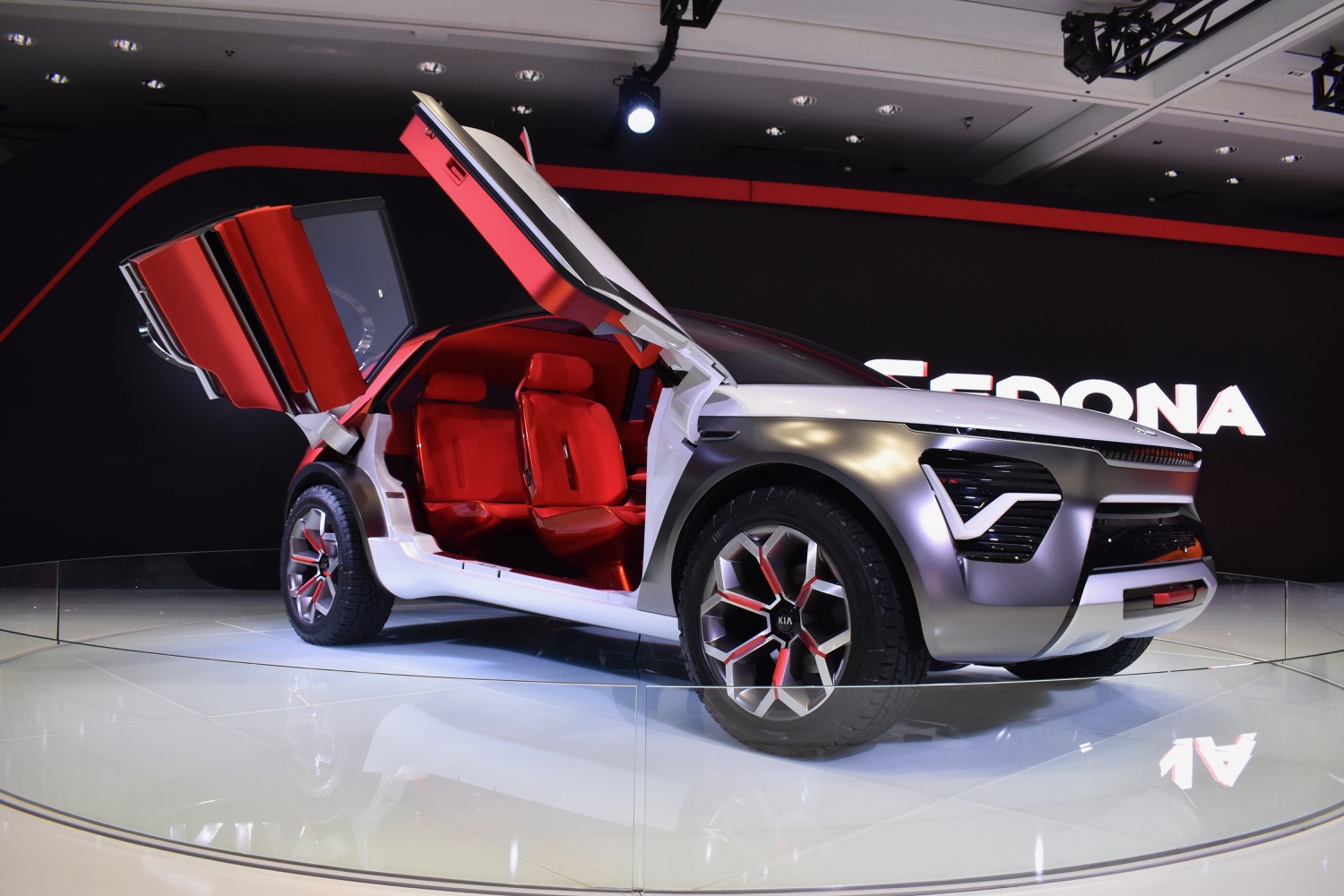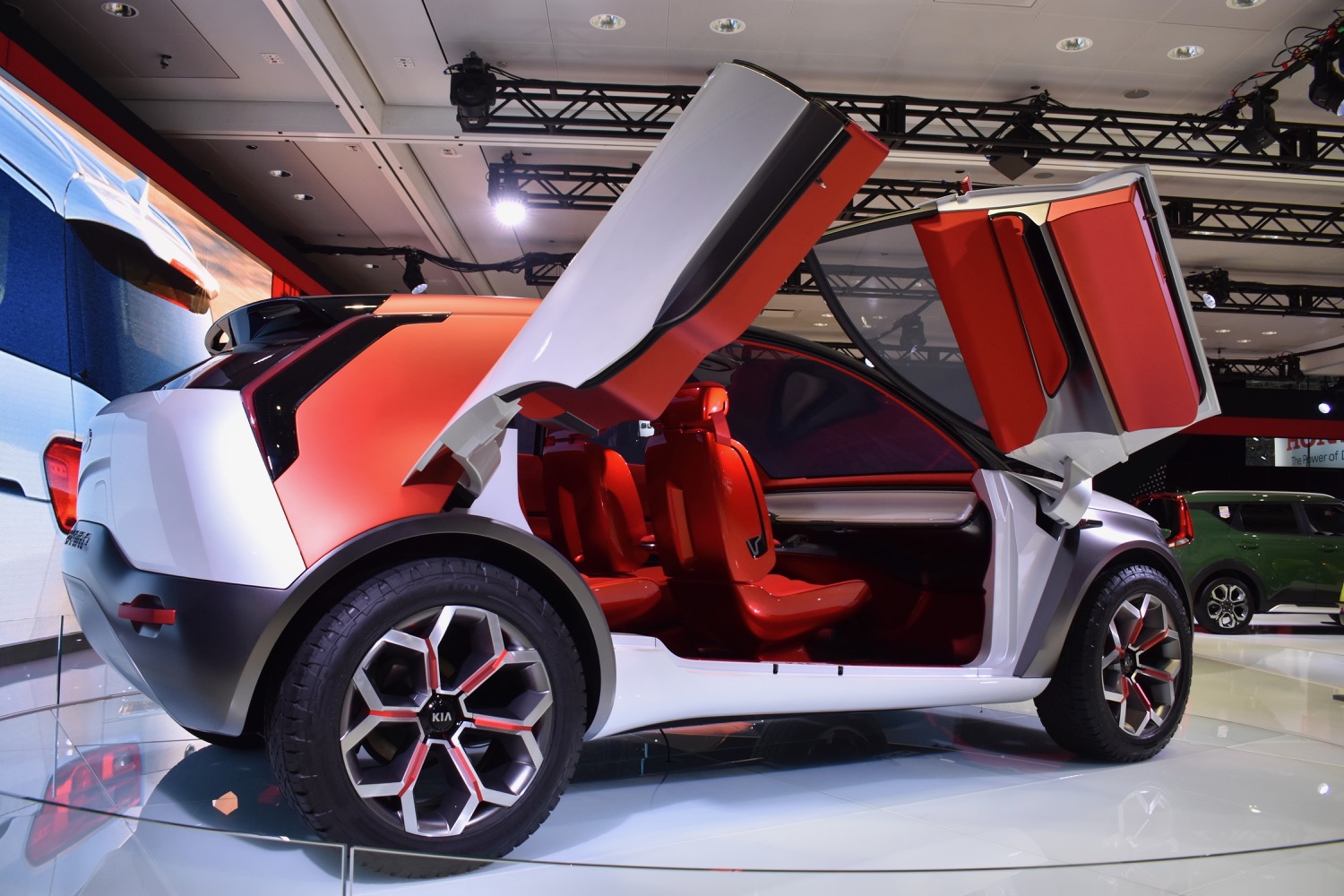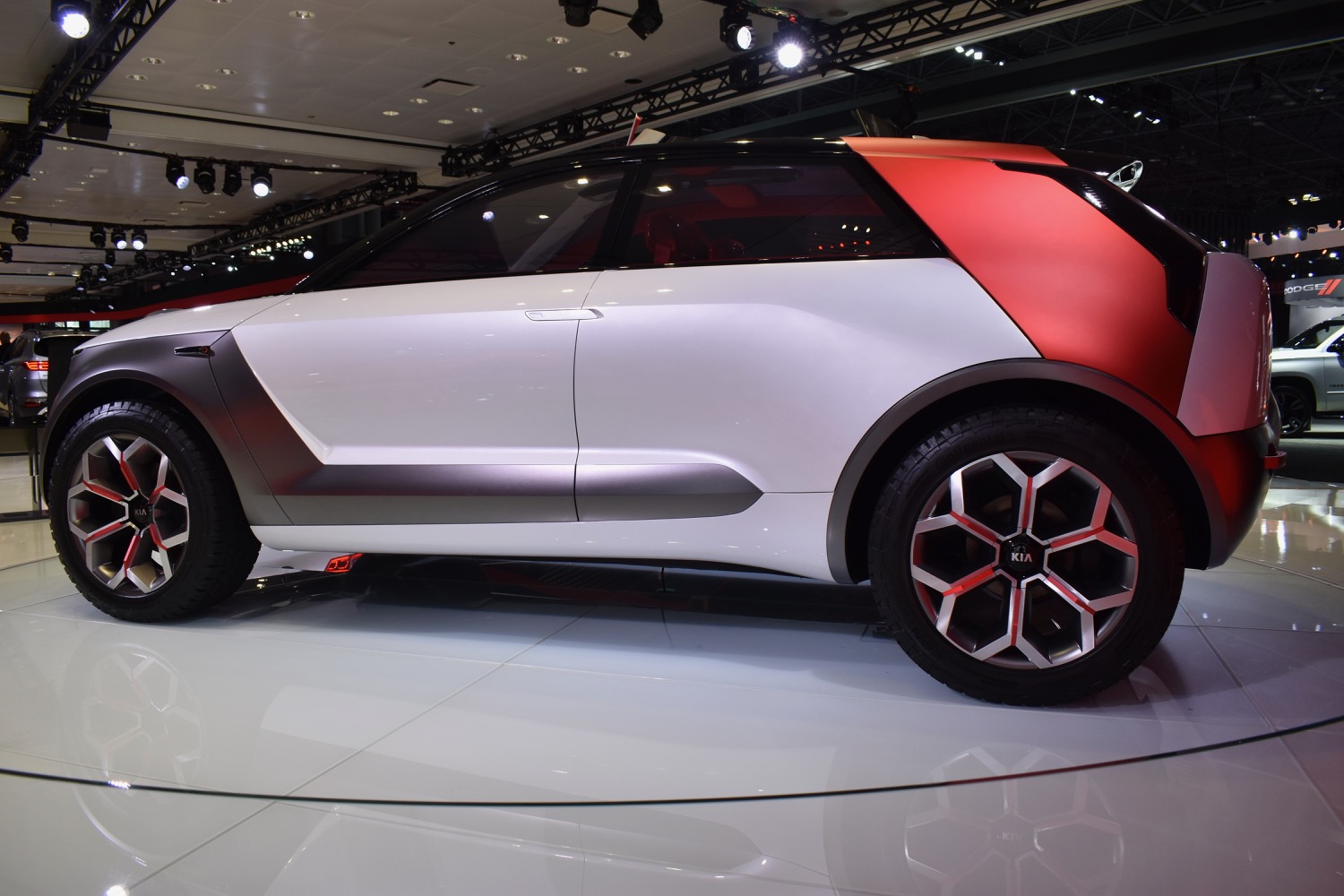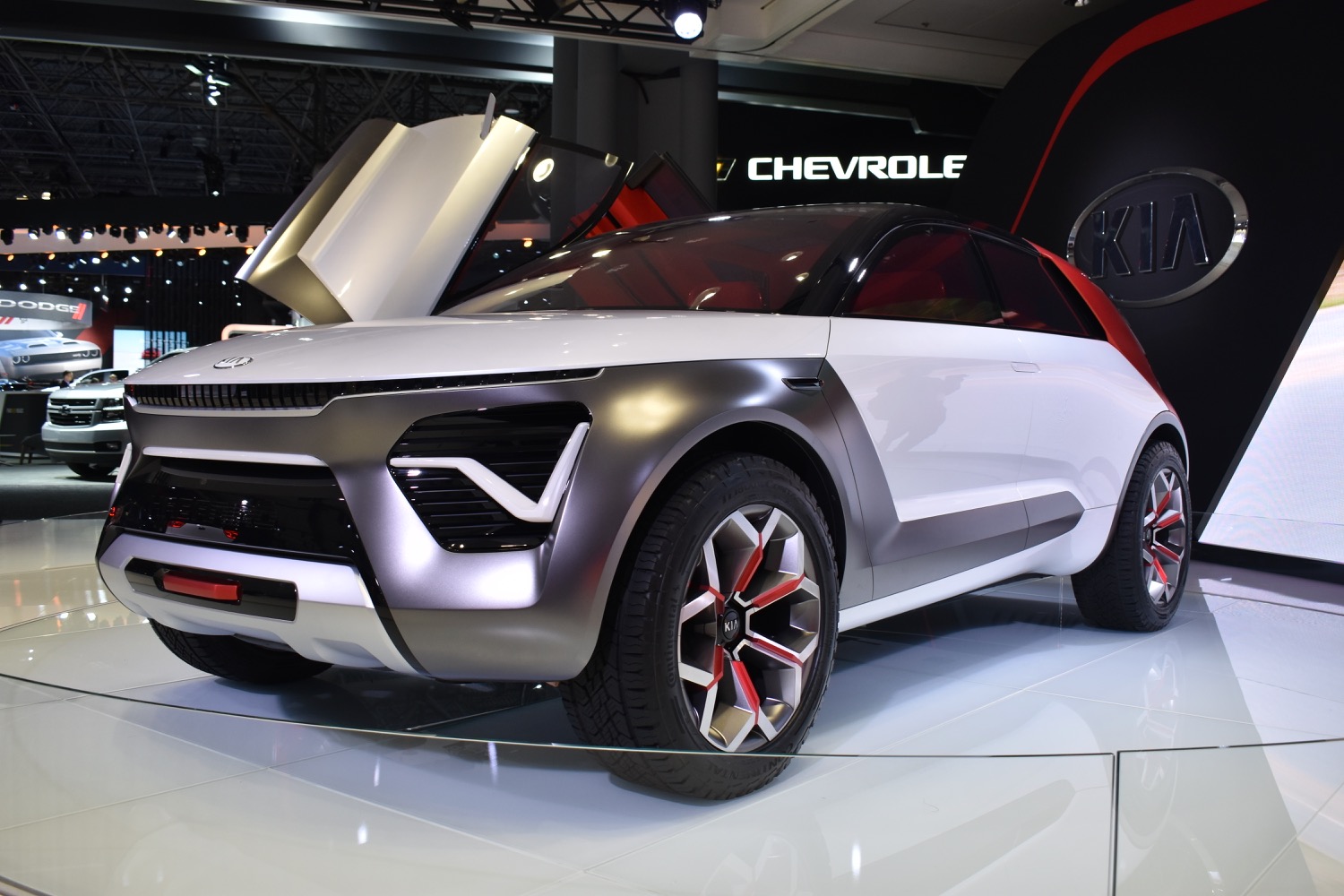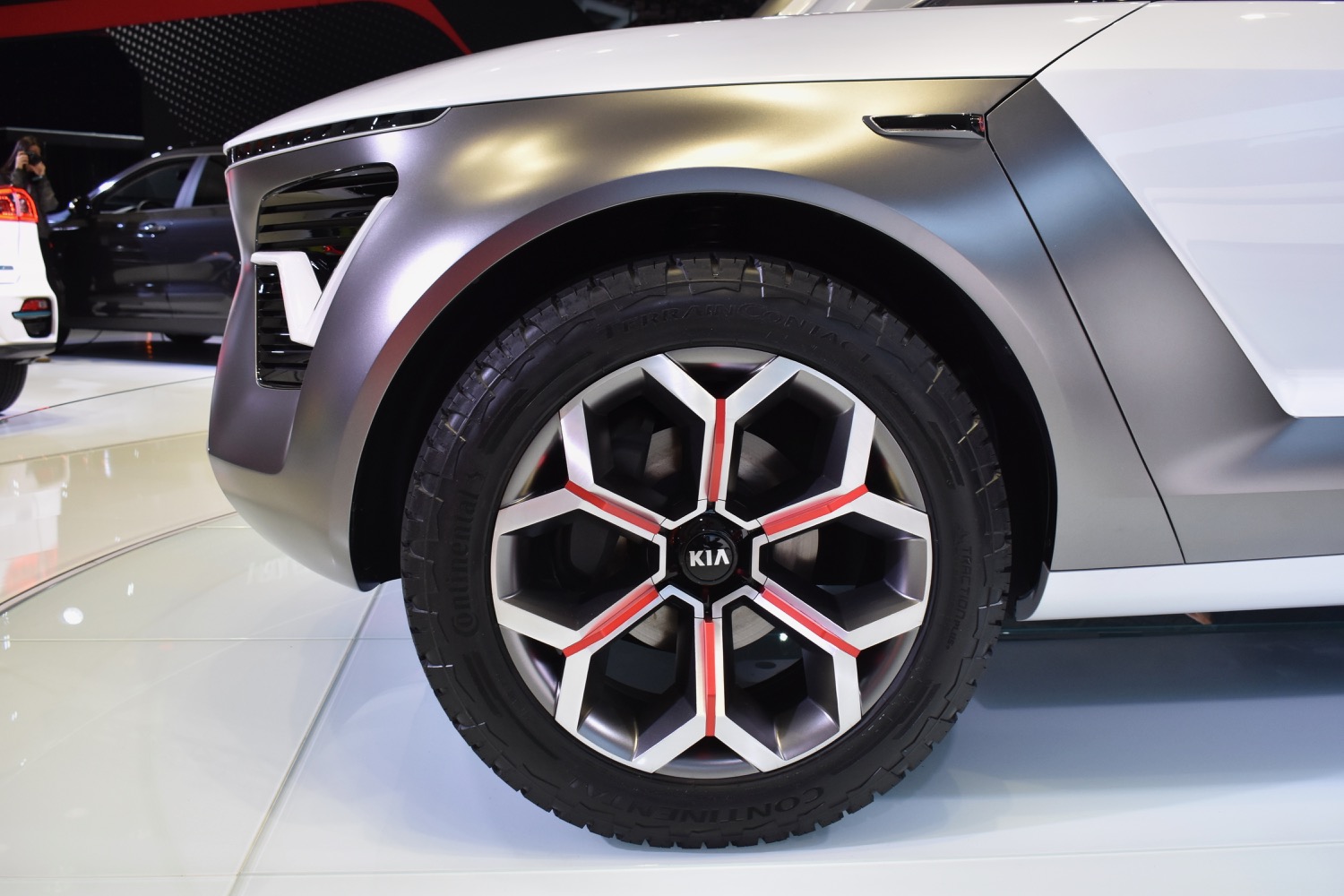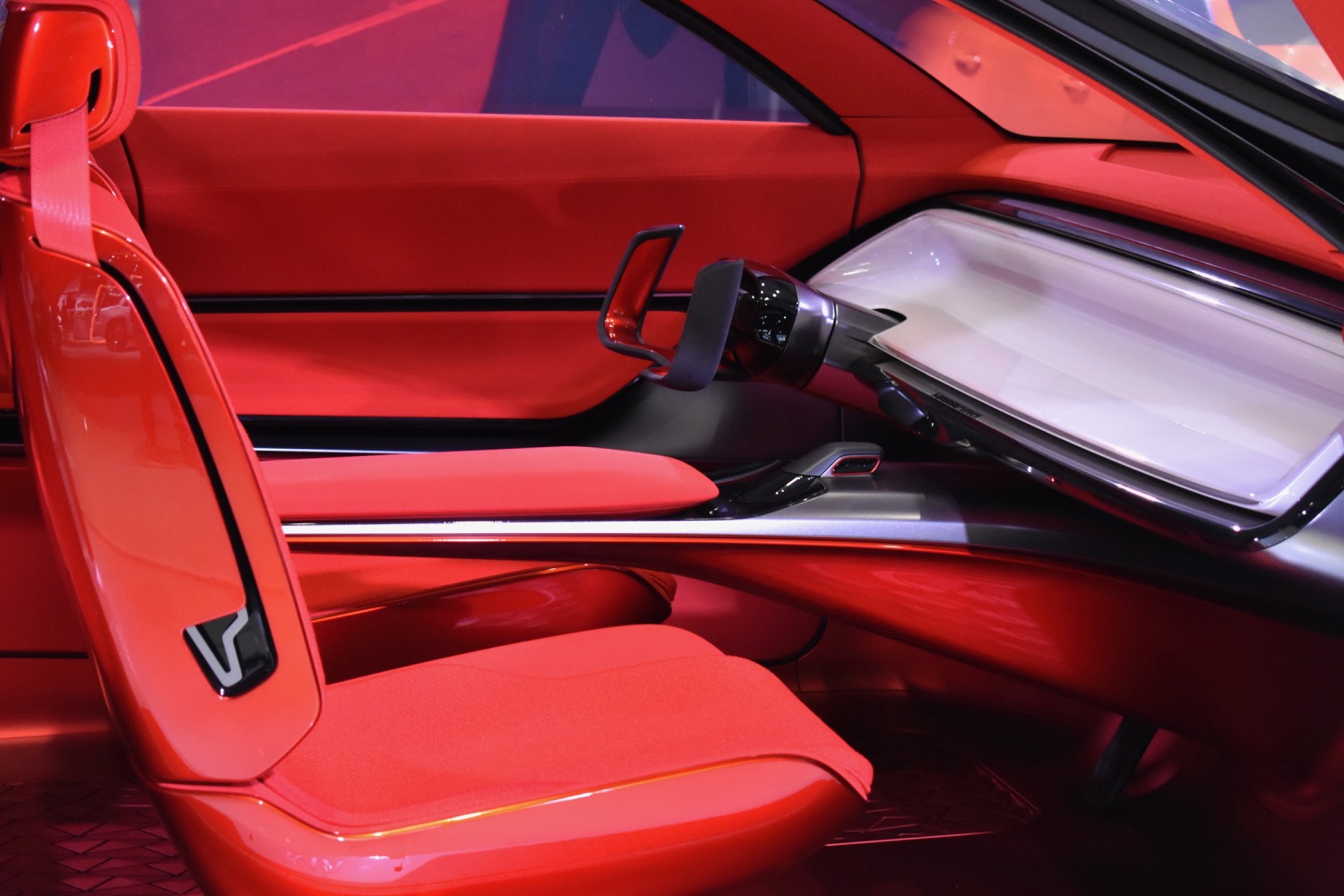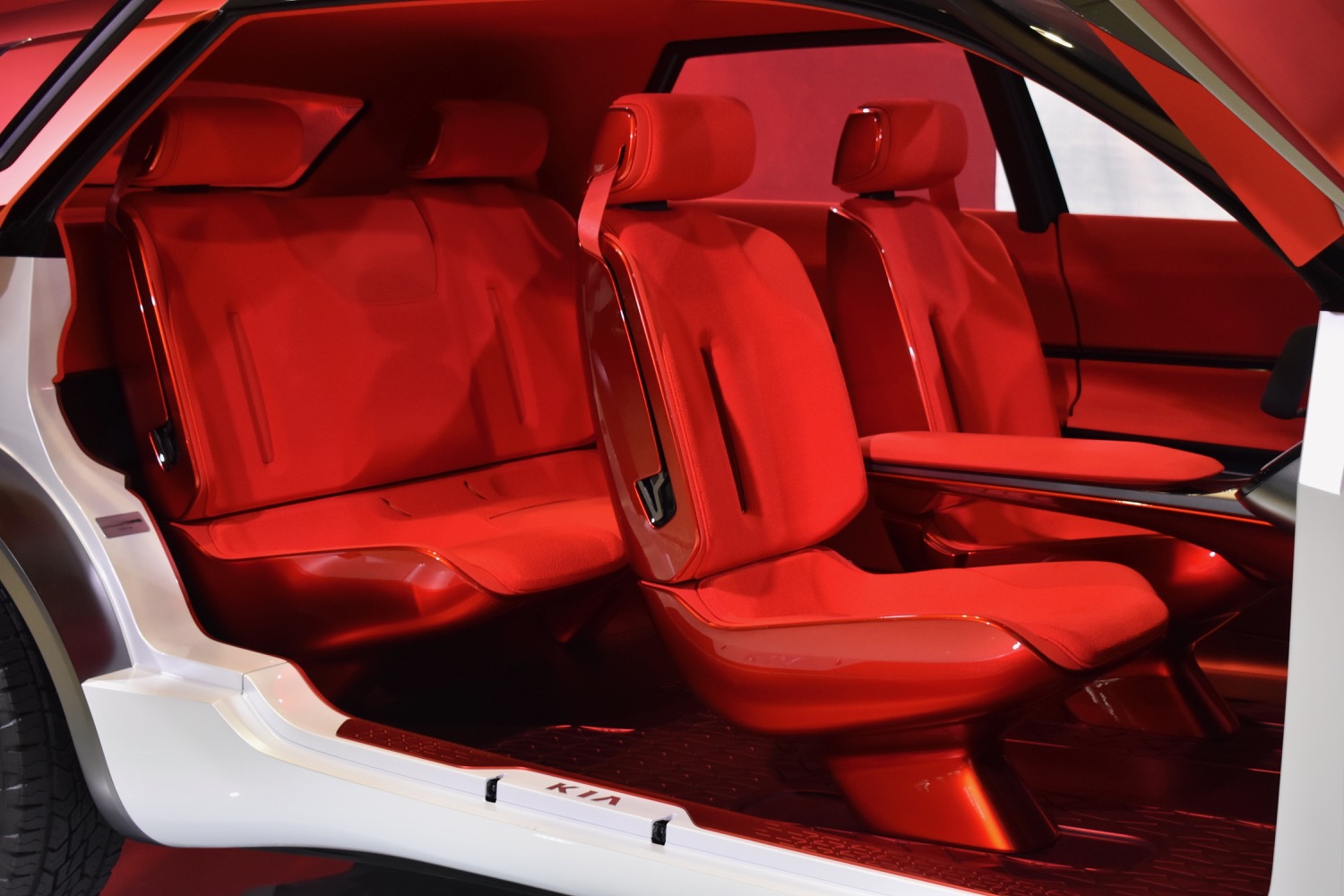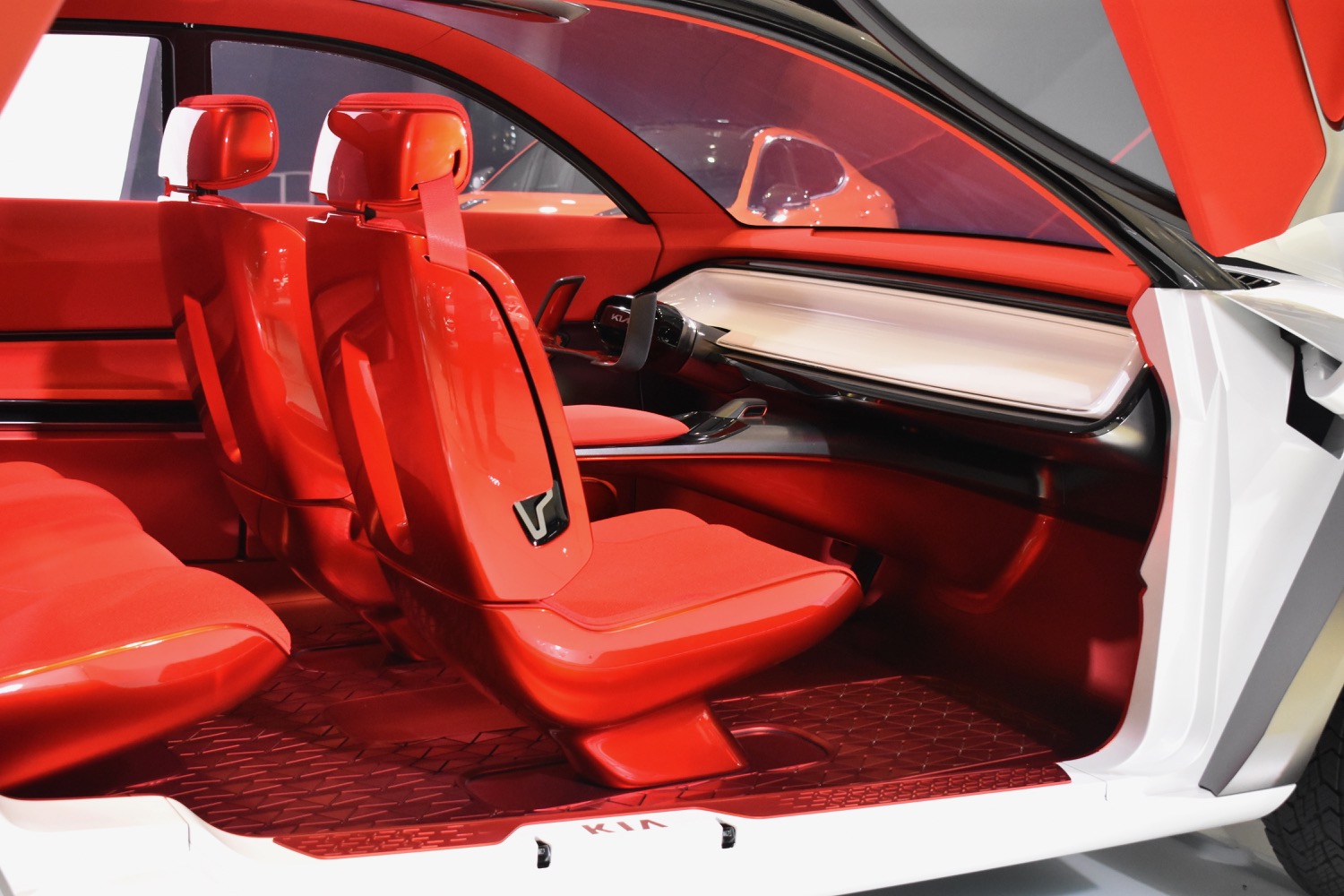
What will the car of the future look like? Will it fly? Will it be powered by some previously unknown propulsion system? Kia thinks cars will develop in a different direction. Debuting at the 2019 New York Auto Show, the HabaNiro concept is a small car that’s part hatchback, part SUV, and powered by electric motors. It’s also packed with tech that could change the way people interact with cars.
Kia considers the HabaNiro to be a crossover, but the automaker claims that’s only because the auto industry hasn’t come up with a proper classification for it. Like many current crossovers, though, the HabaNiro has the general proportions of a hatchback, but with a raised ride height and more upright roof. Designers added some unusual details as well: The grille is supposed to resemble a shark’s snout, according to Kia, and the daytime running lights pulse to represent a heartbeat.
Things get even more interesting on the inside. The HabaNiro was designed for part-time autonomous driving. When the car is in autonomous mode, the steering wheel and pedals fold away. To give the driver something to do when the autonomous system takes over, Kia equipped the HabaNiro with an elaborate head-up display that covers the entire windshield. A “perimeter ventilation system” blows air around the edges of the cabin, and mood lighting is built into the floor.
The HabaNiro also uses the Real-time Emotion Adaptive Driving (READ) system Kia unveiled at CES 2019. The system uses artificial intelligence to pick up on cues from vehicle occupants in order to judge their emotional state. It can then adjust certain aspects of the cabin to try to lift a person’s mood, according to Kia. The system is also used to trigger a rearview display that takes the place of traditional mirrors. All the driver has to do is look at the spot where a rearview mirror would normally be, according to Kia.
Kia was less specific about the powertrain, only saying that the HabaNiro features two electric motors. One motor powers each axle, giving the vehicle all-wheel drive. Kia also estimated range at around 300 miles. The “Niro” in “HabaNiro” is a reference to the Kia Niro, which is available in hybrid, plug-in hybrid, and all-electric flavors.
The Kia HabaNiro isn’t slated to go into production, but some ideas from the concept car could eventually make it into production vehicles, according to Kia. The emotion-reading tech isn’t quite ready for prime time, though.
Updated on April 18, 2019: Added live photos.
Editors' Recommendations
- Too hip for a minivan? Check out VW’s all-electric ID.Space Vizzion concept
- Toyota’s LQ concept has A.I. tech that knows when you’re stressed
- 2019 Kia Niro EV electric car offers 239 miles of range for $39,495
